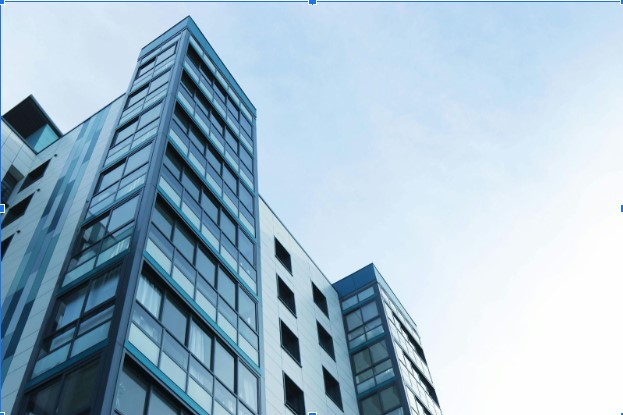
Mold in commercial buildings can be a significant issue for property managers and business owners. It’s more than just an unsightly problem; mold can pose serious health risks to employees and customers and lead to expensive repairs.
Preventing mold growth should be a top priority for anyone managing commercial properties. The good news is that there are effective strategies to keep mold at bay. By being proactive and following these steps, you can maintain a healthy and safe environment for everyone in your building.
Understanding the Causes of Mold
Before we start discussing prevention strategies, it’s important to understand what causes mold. Mold thrives in damp, humid environments. Common sources of moisture in commercial buildings include leaks, high humidity, and poor ventilation. Identifying these sources is the first step in preventing mold growth.
Mold spores are everywhere, both indoors and outdoors. They can enter buildings through open doors, windows, and vents or hitch a ride on clothing, shoes, and pets. Once inside, mold needs moisture to grow. It can develop on various surfaces, including wood, paper, carpet, and insulation.
Now, let’s look at some simple strategies to prevent mold growth in your commercial property.
- Regular Inspections and Maintenance
Conducting regular inspections is crucial in identifying and addressing potential mold issues before they become significant problems. Promptly repair any leaks or water damage to prevent mold from taking hold.
During these inspections, pay close attention to areas prone to moisture, such as basements, bathrooms, and kitchens. Check for signs of water stains, discoloration, or a musty odor, which could indicate mold growth. Regularly inspect and clean your HVAC system to ensure it isn’t spreading mold spores throughout the building.
If there is even a slight chance of mold in your building, contact a commercial restoration company as soon as possible. These companies can offer comprehensive inspections and maintenance services, identifying hidden moisture sources and providing solutions to prevent mold growth. Their expertise ensures that your building remains in top condition and mold-free.
- Controlling Humidity Levels
Maintaining appropriate humidity levels is vital in preventing mold. Keep indoor humidity below 60%, ideally between 30-50%. Use dehumidifiers in areas prone to high humidity, such as basements or areas with poor ventilation. Monitoring humidity levels with hygrometers can help you stay on top of this task.
Humidity control is especially important in regions with naturally high humidity. In such areas, it’s essential to use air conditioning systems that help reduce humidity. Ensure that all areas, including storage rooms and unused spaces, are kept dry and well-ventilated.
- Proper Ventilation
Proper ventilation is another critical factor in mold prevention. Ensure that all areas of your building have adequate airflow. Use exhaust fans in kitchens, bathrooms, and other moisture-prone areas to reduce humidity. Regularly clean and maintain your HVAC system to prevent mold spores from spreading through the air.
In addition to using exhaust fans, consider installing energy-efficient ventilation systems that continuously remove moisture-laden air from the building. Regular maintenance of these systems ensures they function optimally and prevents them from becoming mold growth sites themselves.
- Prompt Water Damage Response
Time is of the essence when it comes to water damage. Address any leaks, flooding, or spills immediately to prevent moisture from seeping into building materials. Quick action can prevent mold from establishing itself and spreading.
In case of significant water damage, consider hiring a professional restoration service to ensure thorough drying and cleaning. These services use industrial-grade equipment to remove moisture and prevent mold growth. Even minor spills should be cleaned up promptly, and wet materials should be dried or replaced as needed.
- Using Mold-Resistant Products
Consider using mold-resistant products during construction or renovation. These include mold-resistant drywall, paint, and insulation. Such materials can significantly reduce the risk of mold growth, especially in areas prone to moisture.
When selecting building materials, look for those specifically designed to resist mold. Mold-resistant drywall has a paperless backing, making it less susceptible to mold growth. Mold-resistant paint contains antimicrobial properties that prevent mold from growing on painted surfaces. Insulation materials treated with mold inhibitors can also help maintain a mold-free environment.
- Educating Occupants
Educate your building’s occupants about mold prevention. Encourage them to report any signs of water damage or mold immediately. Provide guidelines on maintaining low humidity levels and proper ventilation within their spaces.
Tenant awareness and cooperation are vital in preventing mold. Provide educational materials, conduct training sessions, and implement a clear reporting system for moisture problems. Empower occupants to take proactive measures, such as using dehumidifiers in their spaces and promptly reporting leaks or water damage.
- Monitoring and Maintenance of Building Systems
Regularly inspect and maintain all building systems, including plumbing, HVAC, and roofing. Ensure that drainage systems are working correctly to prevent water accumulation around the building’s foundation. Keep gutters and downspouts clean and functional.
Routine maintenance of plumbing systems is crucial to prevent leaks and water damage. Regularly check for pipe leaks, inspect fixtures, and ensure that sump pumps are functioning correctly. HVAC systems should be serviced regularly to prevent mold growth in air ducts and ensure proper airflow throughout the building.
- Establishing a Mold Prevention Plan
Develop a comprehensive mold prevention plan for your building. Include regular inspections, maintenance schedules, and emergency response procedures. Train your staff on mold prevention best practices and ensure they understand their roles in maintaining a mold-free environment.
Effective mold prevention in commercial buildings involves understanding key strategies and implementing comprehensive solutions. For a deeper dive into mold removal techniques and services, click here for more info on how to address and manage mold issues effectively.
A well-structured mold prevention plan outlines specific actions and responsibilities. It should include detailed procedures for regular inspections, maintenance tasks, and emergency responses. Assign roles and responsibilities to staff members, ensuring everyone knows their part in preventing mold. Regularly review and update the plan to incorporate new best practices and address emerging risks.
Conclusion
Preventing mold in commercial buildings requires a proactive approach and consistent effort. By understanding the causes of mold, conducting regular inspections, maintaining proper humidity and ventilation, and responding promptly to water damage, you can keep your building safe and healthy. Stay vigilant and informed to protect your property and its occupants from the harmful effects of mold.
Implementing these strategies will help you maintain a mold-free environment, ensuring the safety and well-being of everyone who enters your building. With proper planning and regular maintenance, you can prevent mold from becoming a problem and keep your commercial property in top condition.






